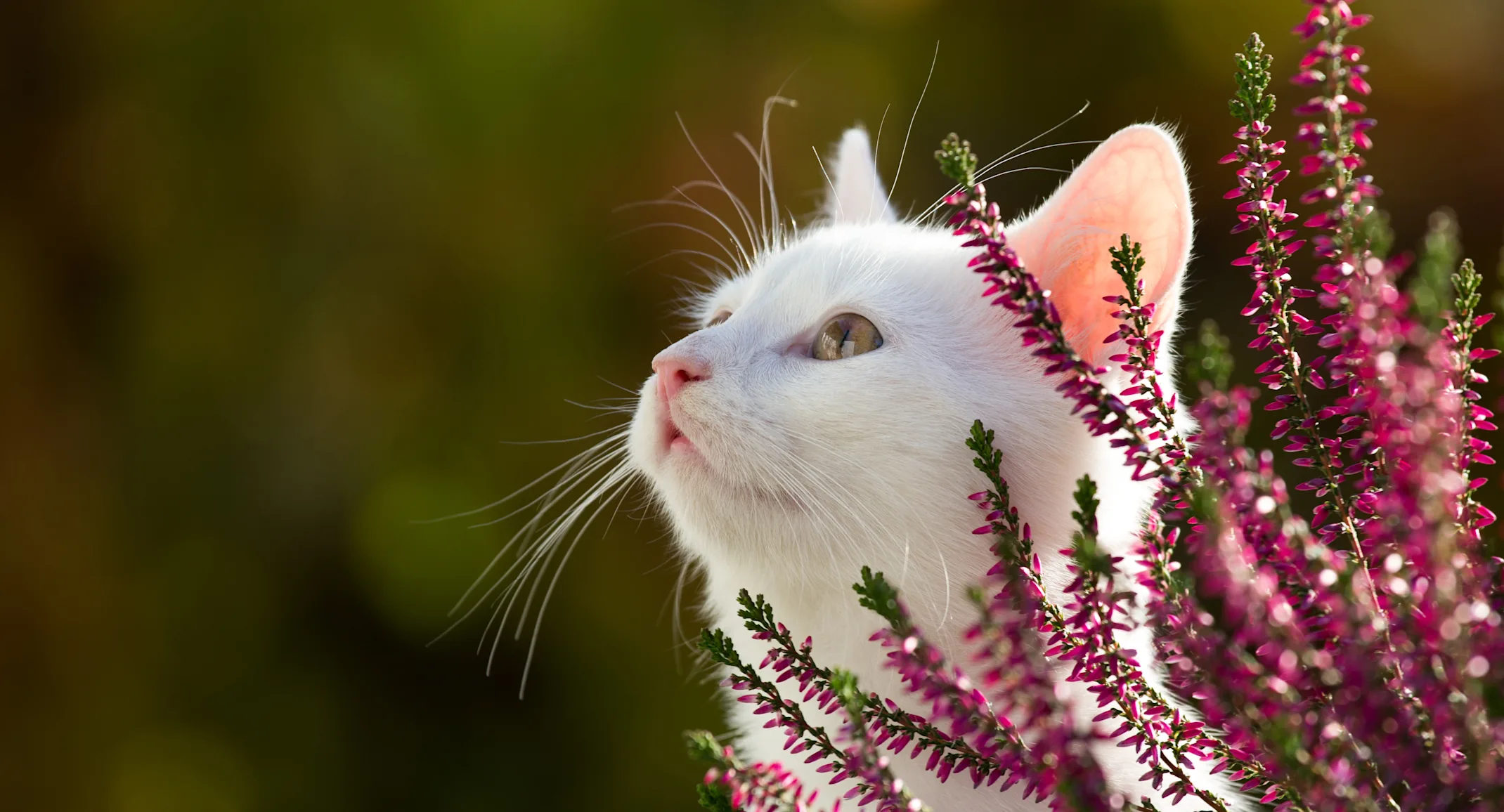Non-Toxic Flowers for Cats
Cats

With Mother’s Day around the corner and spring in full swing, you may gift a bouquet of flowers for mom, a loved one, or of course, yourself! While it is exciting to look through flowers and be dazzled by the different colors and petals, it is important to remember that many flowers can be toxic to your pets if ingested.
So, which flowers should you avoid, and which are a better substitute? We have you covered:
Flowers That Are Toxic to Pets
View, download, & save our PDF of Toxic Flowers
Lily
While Lilies look beautiful, they are extremely toxic to cats, with some versions being toxic to dogs as well. In cats, these plants can cause acute kidney failure. All parts of the plant are dangerous: petals, leaves, stem, and pollen. A tiny amount of any piece of a Lily can be fatal to cats. Because cats can jump and climb onto any space, it is recommended to opt for a pet safe flower instead of going for Lillies.
Symptoms of Lily toxicity include, but are not limited to: lethargy, vomiting, dehydration, and not urinating or urinating too frequently.
Tulip
Tulips often grow in gardens outside of homes, but they are also used in bouquets and potted plants indoors. The toxicity from the Tulip comes mostly from the bulb of the plant, but the whole plant is considered toxic. If you are planning having tulips in or out of your home this year, it is extremely important to make sure that both dogs and cats do not have access to them, as the tulip can be fatal if ingested.
Symptoms of Tulip toxicity include, but are not limited to: diarrhea, dizziness, labored breathing, pain, and drooling.
Azalea
All parts of the Azalea plant are toxic, and can prove fatal if ingested by pets. Though Azaleas are normally planted outdoors, they are also common to find in small potted plants indoors. It is important to remember that cats can maneuver their way into any area of a home, so if Azaleas are on your list, plant them outdoors, taking precaution to dog proof the area as well.
Symptoms of Azalea toxicity include, but are not limited to: vomiting, diarrhea, trouble walking, lethargy, and seizures.
Daffodil
These flowers can be very toxic to both dogs and cats. Daffodils, like Tulips, are toxic along the whole plant, but especially toxic in the bulb.
Symptoms of Daffodil toxicity include, but are not limited to: shivering, seizures, diarrhea, drooling, vomiting, nausea, and labored breathing.
Kalanchoe
Ingestion of this houseplant may result in vomiting and diarrhea, but can cause an abnormal heart rhythm in rare cases. While this plant may not be as dangerous as others on this list, it is important to note to encourage pet owners to opt for a different houseplant, or to try their best to keep them out of reach of dogs and cats.
Hyacinth
Hyacinth is in the same family as Tulips, which make their toxicity symptoms similar. They, too, are more toxic in the bulb, but are also toxic throughout the plant. Hyacinth flowers are known to be added to bouquets, so it is important to make sure that each flower included in a bouquet is safe for your pets.
Symptoms of Hyacinth toxicity include, but are not limited to: vomiting, diarrhea, drooling, and increased heart rate.
Carnation
Carnations are toxic to not just dogs and cats, but horses as well! While this flower is known as a more mild toxicity, it is important to note that carnations can cause gastro-intestinal symptoms, as well as dermatological symptoms. Carnations should be placed in an area pets cannot access.
Symptoms of carnation toxicity include, but are not limited to: vomiting, diarrhea, and skin irritation.
Daisy
Daisies are toxic to both dogs and cats. While the daisies that are yellow in the middle and have white petals should be kept away from your pets, Gerbera daisies (an entirely different species of plant) are safe. Be sure when buying daisies that you differentiate between the two, and go with the safest option for your pet.
Symptoms of daisy toxicity include, but are not limited to: vomiting, diarrhea, trouble walking, and skin irritation.
Flowers That Are Safe For Pets
View, download, & save our PDF of Non-Toxic Flowers
African Violet
For those who are fans of the African Violet’s vibrant colors, you’re in luck! These flowers are non-toxic for both cats and dogs. African violets come in a variety of colors, and are relatively low maintenance given the right soil and light conditions. So, if you ever catch your pets sniffing around this flower, don’t worry, they’ll be safe.
Roses
Roses are always a great choice to gift to a loved one. If you’ve had roses in your home before, you know that after some time, their petals will fall and cover your floor and/or table. Even though it could cause a bit of a mess, you can rest easy knowing that roses are non-toxic for cats and dogs. If they happen to get into a petal that has fallen off, they’ll be perfectly fine!
Sunflower
Sunflowers are a favorite for summer time photos and perfect for brightening up the home. They are also non-toxic to cats and dogs, which is why they are a great gift for a loved one with furry friends! Sunflowers need plenty of water, so be ready to stay diligent while you care for them.
Orchid
Orchids, as well as their family members in the Orchidaceae family, are non-toxic to pets and safe to have in the home! Feel free to keep them around the house, or to give as gifts. Another plus, they are a surprisingly low-maintenance plant.
Zinnias
Zinnias are vibrant flowers that come in a variety of colors including pink, red, purple, white, yellow, orange, and even green! They also happen to be non-toxic to pets. They are easy to grow from seed, and would be a great addition to your pet-safe garden!
Asters
Asters are beautiful, pet-safe flowers that you can have in your home or grow in your garden. With colors ranging from pink, blue, and white, they are perfect for someone looking for colorful flowers this spring, or if your fall garden needs some flowers, there are autumn blooming aster varieties as well. It is important to note that asters must be watered at the base, without damage being done to the petals.
Complete List
It may be confusing to differentiate between toxic and non-toxic flowers and plants when you are looking to expand your garden or gift a bouquet to a friend or family member. A great resource for choosing non-toxic flowers is the ASPCA website.
